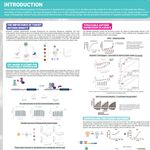Stereo-EEG-Guided Deep Brain Stimulation for Treatment-Resistant Depression - Circuit Mapping and Modulation
Treatment-resistant depression is an immense source of disability and suffering, and represents a major unmet clinical need for innovative and effective therapies. Deep brain stimulation trials for treatment-resistant depression have evaluated a variety of targets, but have not yet led to clarity on the neural circuit modulation necessary for sustained treatment response. The current study represents a step toward greater mechanistic understanding of the pathophysiological state underlying treatment-resistant depression, as well as contributing new means of characterizing the system-wide response to direct intracranial stimulation modulating sub-components of the network. In this study, deep brain stimulation electrodes are implanted in two canonical targets (ventral capsule/ventral striatum and subcallosal cingulate), alongside temporarily-implanted stereotactic EEG electrodes across the frontotemporal networks of depression. Recordings from the network at rest, during depression-relevant tasks, and during targeted exploration of stimulation parameter space are then used to constrain our understanding of the disease state signature, with new implications for how best to modulate it to drive treatment response in and individualized fashion.
Learning Objectives:
1. Describe the structure and purpose of Stereo-EEG as a diagnostic tool.
2. Describe a method of selecting stimulation parameters based on individual intracranial recordings.
3. Name one limitation of diffusion tensor imaging in defining affective networks for neuromodulation.





